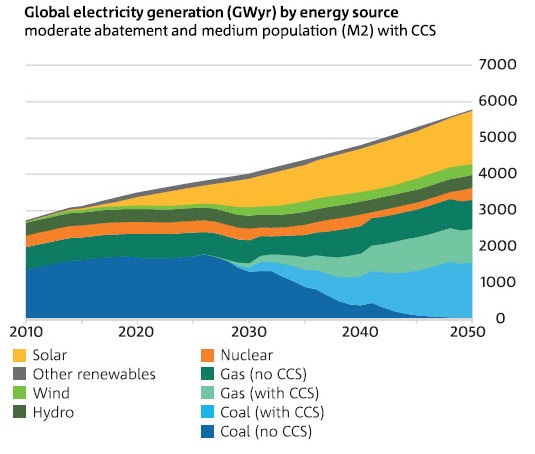Ross Gittins describes the CSIRO’s first Australian National Outlook report as “heroic” and “fair dinkum”. It does what the Government Intergenerational Report failed to do. It takes account of the effects of climate change and environmental sustainability.
The report says we can have dynamic economic growth simultaneously with sustainable resource use and reduced environmental stress, but only if we make the right choices collectively. Policy matters.
Ross Gittins has provided an explanation of the methodology used and a summary of the main findings. Links to the report may be found here as well as a link to the article in Nature. I’ll just highlight a few aspects.
First and perhaps most important, the report believes that economic growth can be “decoupled” from natural resource use and environmental stress:
- Physically, we find the services derived from natural resources (energy, water, food) can increase, while associated environmental pressures ease (greenhouse emissions, water stress, native habitat loss). Importantly, these projected decouplings do not involve a reduction in the value of Australia’s heavy industry, or outsourcing its environmental footprint to other nations. Instead energy- and material-intensive sectors are projected to increase their share of economic activity, even in scenarios with the strongest global abatement efforts. (I’ve taken out the links to supplementary material to improve legibility.)
Average incomes will rise by up to 66% if average working hours decline another 11% over the next four decades, in line with recent trends, and rise by 75% or more if there is no decline in working hours.
Limiting global warming to 2 degrees above pre-industrial levels by 2100 requires “very strong” efforts to “abate” (reduce) emissions. Australia must act in concert with other nations. In 1990 our per capita emissions were five times the world average.
- We find Australia can reduce its per capita emissions to the world average by 2050, while maintaining strong economic growth and increasing exports from our energy-intensive industries. Australia could meet even the most stringent of long term targets, such as zero net emissions by 2050, without relying on international offsets.
They do appear to envisage the large-scale deployment of CCS (carbon capture and sequestration) from the late 2020s, which some might query. Here is a graph of possible global energy production:

They also assume sequestration by storing carbon in plants, achieved by reforestation of cleared land. This could be achieved:
- because carbon sequestration becomes more profitable than beef and other agricultural production across large areas of Australia (up to 58 Mha, or 70% of the intensive-use zone).
In other words, growing trees becomes more profitable than running cattle.
While admitting that the cascading effects of climate change on agricultural production are not clear, they still expect volumes to rise by at least 50% by 2050. Prices should also rise as global supply falls behind the growth in global demand.
Growth in water use is projected to double:
- driven by increased population, economic growth, and new carbon plantings. This growth in demand can be met while enhancing non-agricultural water security, without increasing pressure on water-limited catchments, through water recycling, desalination and integrated catchment management.
The say that energy and transport affordability can be maintained or improved.
- Energy efficiency can help offset higher unit electricity prices, but we find better management of peak demand and our transmission and distribution networks could yield the greatest benefits. By 2050, electric vehicles and biofuels could reverse our mounting transport fuel imports, as well as reducing costs, improving air quality, and reducing greenhouse gas emissions.
Overall the report aims to better understand two aspects of Australia’s physical economy:
- The ‘energy-water-food nexus’ and the prospects for Australia’s materials- and energy-intensive industries.
It is a very different document from the Intergenerational Report, a political document which Treasury virtually disowned. As Ross Gittins said:
- I’m sure in 20 years’ time, this CSIRO modelling will look very crude. Right now, however, it’s a wonder of the modern world.
See also Steve Hatfield-Dodds, Chief Scientist, Integration science and public policy, CSIRO at The Conversation.

